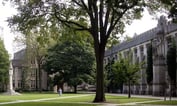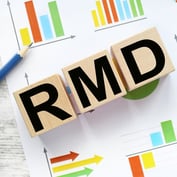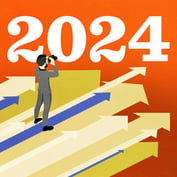Most DAF sponsors reported that their high-net-worth donors increased their grants by one-third or more over the past year, thereby extending a lifeline to the charities in dire need of support since many fundraisers were canceled, other donors had to cut back on their support, and demand for services increased.
Specific reasons that younger donors have shared with AEF recently about why they have opened DAF accounts include:
- Their investment returns were strong and they wanted to support charities that help those who have been less fortunate, especially in the past year.
- They wanted to be involved and engaged in their giving, often establishing a family giving mission and including their children.
- They started a company, often in technology, and sold it while young and want to give back. Many of these young entrepreneurs plan to create other companies and will give more when they sell again.
- Their businesses have continued to be successful, and their incomes have been significant, and they created a DAF account so they could receive a large tax deduction now and can make grants now but also in the future, when their income may be less
- They own and run successful companies. The companies want to give back through their personal DAF or a corporate DAF, and they want to get employees involved.
- They plan to sell their business and want to gift privately held stock presale so more money can go to charity instead of paying capital gains taxes.
- Many executives received company stock that has skyrocketed in value.
- They plan to grant significant amounts over time and want these assets to grow tax-free in a DAF.
- They want to provide significant support to their favorite charity, but they do not want to grant it all at once to a charity in case the mission or leadership changes over time or a large gift may overwhelm the charity. They still want or need a large deduction, however, when they contribute to a DAF.
- They inherited wealth or a DAF established in memory of a family member or friend.
- They are not married or do not have children, and want to establish a DAF so they can create an impact in their lifetime since they have no heirs to continue their giving.
- They have converted cumbersome and complex old family foundations of their parents to DAFs. Eighty-eight percent of foundations are under $5 million, yet few advisors today recommend foundations at those levels, or even below $10 million or $20 million.
- They are not aligned with other family members on the family foundation board, so the foundation makes grants to create separate DAFs for them and other family members.
- They want to be more organized and efficient in their giving. They want to make all of their grants from one online DAF portal and want to receive just one tax receipt annually.
- They work with advisors who told them to donate appreciated assets to a DAF instead of cash and appreciated securities to many charities.
- They want to set up and start to fund a DAF account 10 to 20 years before retirement so they can continue to make grants while working and in retirement.
- They invested in cryptocurrencies or other assets that performed extremely well and donated these to avoid capital gains taxes.
The crisis caused many donors of all ages to reevaluate their charitable giving plans. Fortunately, many donors responded to the challenges in the past year by creating or additionally funding their DAF accounts while also increasing their grants to both their favorite charities and new ones that addressed pressing issues.
Donors are still generous in later years, but increasingly, they realize that by planning far in advance of retirement, they can begin to make a difference while they are still working so they have plenty to give once they retire. And once the DAF account is created, they are better able to engage their families and make a difference both now and later.
Ken Nopar is the vice president and senior philanthropic advisor of the American Endowment Foundation donor-advised fund. Founded in 1993, AEF is the sixth largest and the leading independent DAF sponsor, working with 10,000 donors and their tax, wealth and legal advisors in all 50 states.









 April 28, 2021 at 09:36 AM
April 28, 2021 at 09:36 AM











